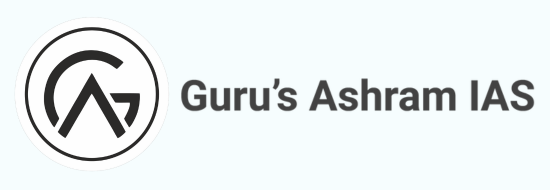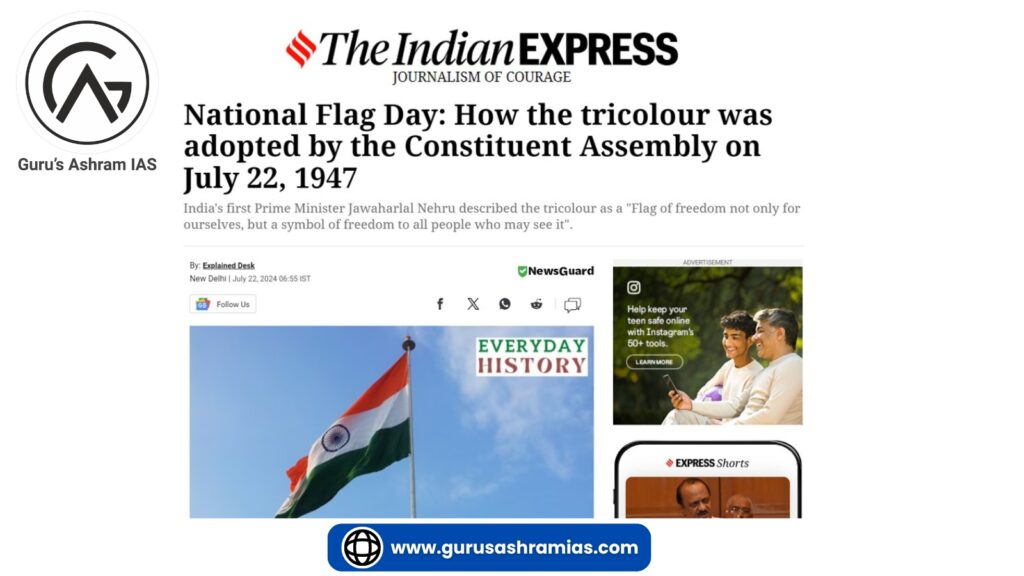The National Flag Day
- India’s National Flag Day commemorates the adoption of the Indian national flag by the Constituent Assembly on 22 July 1947, a few days before the country gained independence from the British (15 August 1947).
The National Flag Day:
- On 22 July 1947, the Indian Constituent Assembly under the chairmanship of Dr. Rajendra Prasad adopted the national flag.
- The national flag is a symbol of national pride, unity and freedom struggle and a tribute to the sacrifices of freedom fighters.
Concept and Significance:
- “It has been resolved that the national flag of India shall be a horizontal tricolour of dark saffron (Kesari) white and dark green in equal proportion.
- In the middle of the white strip there will be a circle of dark blue color to denote the charkha. The design of this chakra will be similar to the one built on the Sarnath Singh pillar of Ashoka.
- The diameter of the circle will be approximately equal to the width of the white strip. The ratio of the width to the length of the flag shall normally be 2:3.
- The Assembly unanimously adopted the resolution, reaffirming India’s commitment to freedom and future prosperity with the end of British rule.

History of the adoption of the Indian Flag:
1906:
- The first national flag, consisting of three horizontal stripes of red, yellow and green, was hoisted at Parsi Bagan Square near ‘Lower Circular Road’ in Calcutta (now Kolkata) on August 7, 1906.
1921:
- Later in the year 1921, freedom fighter Pingali Venkayya met Mahatma Gandhi and proposed an original design of the flag, consisting of two red and green bands.
1931:
- After undergoing many changes, the tricolor was adopted as our national flag at the Congress Committee meeting in Karachi in 1931.
1947:
- The Indian flag was adopted in its present form during the meeting of the Constituent Assembly held on July 22, 1947.
Laws relating to the National Flag:
- The hoisting / use / display of the Indian National Flag is governed by the Prevention of Insults to National Honour Act, 1971 and the Flag Code of India, 2002.
The Flag Code of India, 2002:
- Whenever the national flag is hoisted, it should be in a position of respect.
- A flag that is damaged or in disrepair should not be flown and should be disposed of completely privately.
- There are two accepted methods to dispose of a damaged tricolour, either by burying it or by burning it. The dignity of the national flag should always be maintained while disposing of it.
- The flag should not be flown by the same masthead / mast crest with any other flag.
- The flag should not be flown on any vehicle other than those of dignitaries mentioned in Section IX of Part III of the Flag Code, such as the President, Vice-President, Prime Minister, Governor, etc.
- No other flag or emblem should be placed higher than or above or beside the National Flag.
- Any member of the public, any private organization or any educational institution can hoist / display the National Flag on all days and occasions, ceremonial or otherwise, in keeping with the pride and honor of the National Flag.
The most recent amendments:
- The Flag Code of India, 2002 was amended in the year 2021 to allow the flag to be made of polyester or machine and then in the year 2022, the flag was allowed to be flown day and night.
- Flag Code of India, 2002 was amended twice: Once in the year 2021 to allow the flag made of polyester or machine and then in the year 2022 to allow the flag to be hoisted both day and night.
- The shape of the national flag will be rectangular. The flag can be of any shape, but the ratio of length to height (width) of the flag should be 3:2.
The Prevention of Insults to National Honour Act, 1971:
- Any person who, in any public place or at any such place, publicly burns, defaces, defaces, defaces, defiles, defiles, defaces, destroys, crushes or otherwise shows disrespect to or insults (by words, either spoken or written or by acts) the Indian National Flag or the Constitution of India or any part thereof, shall be punished with imprisonment for a term which may extend to three years, or with fine, or with both.




